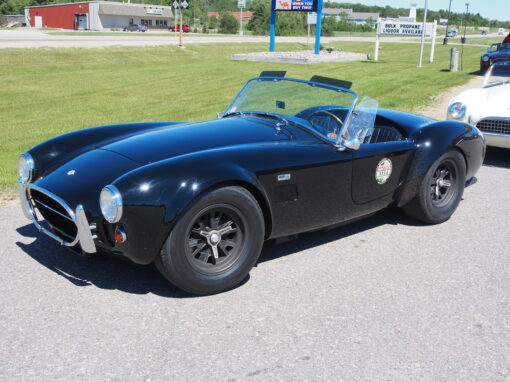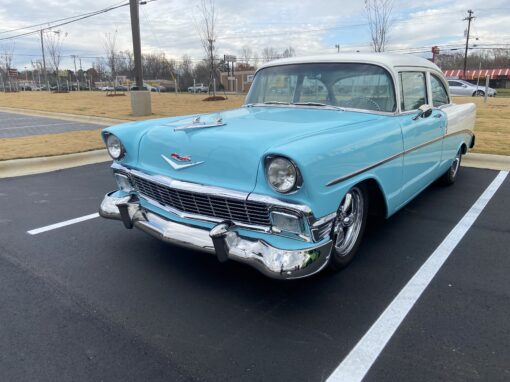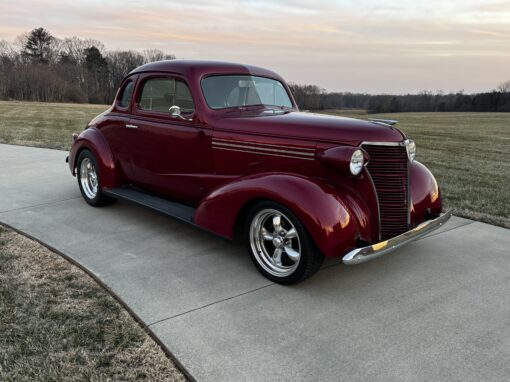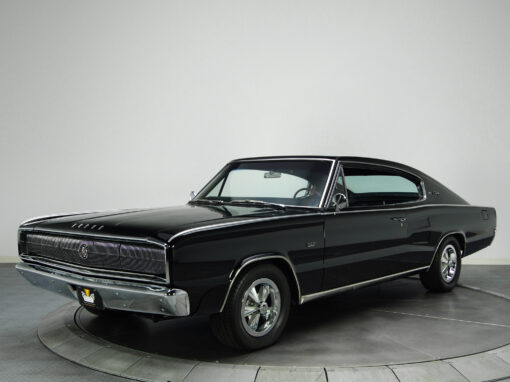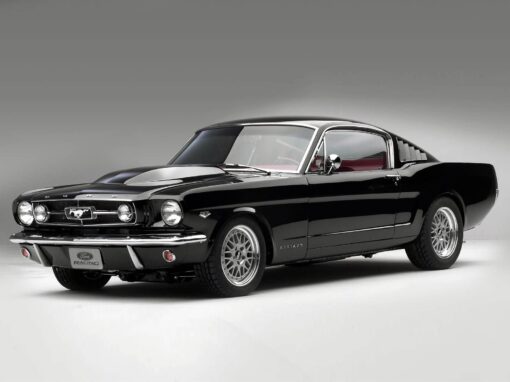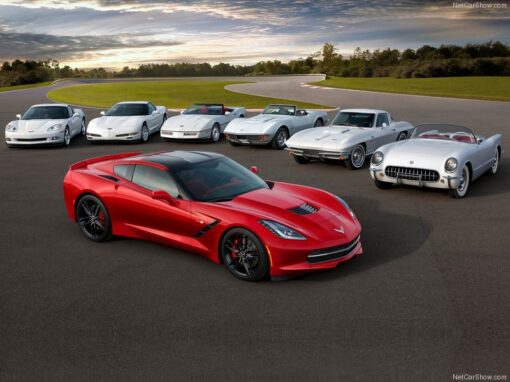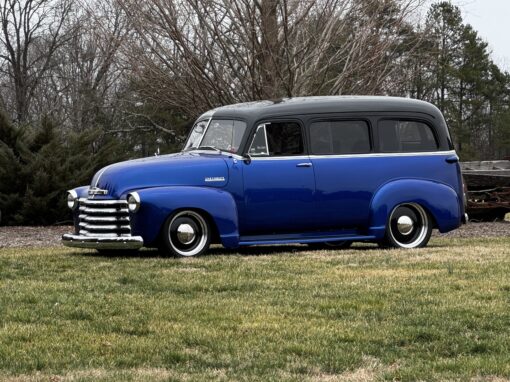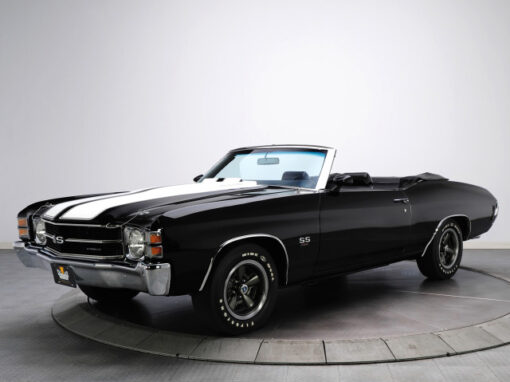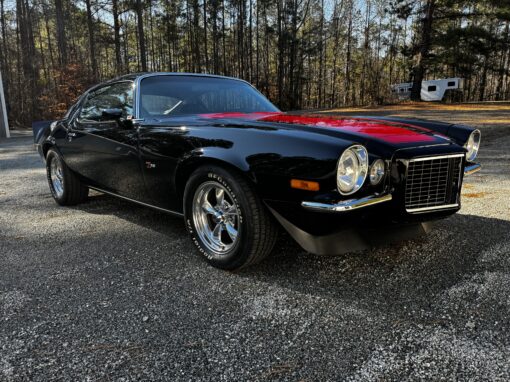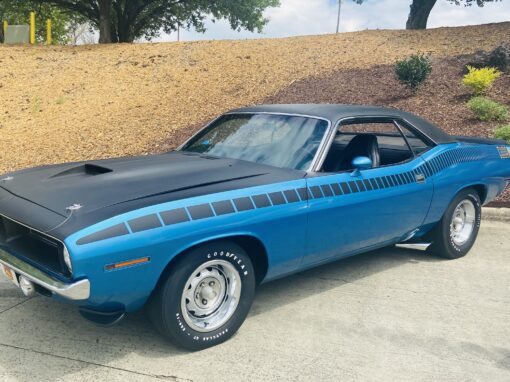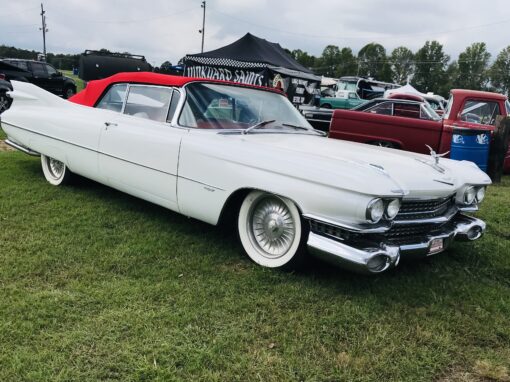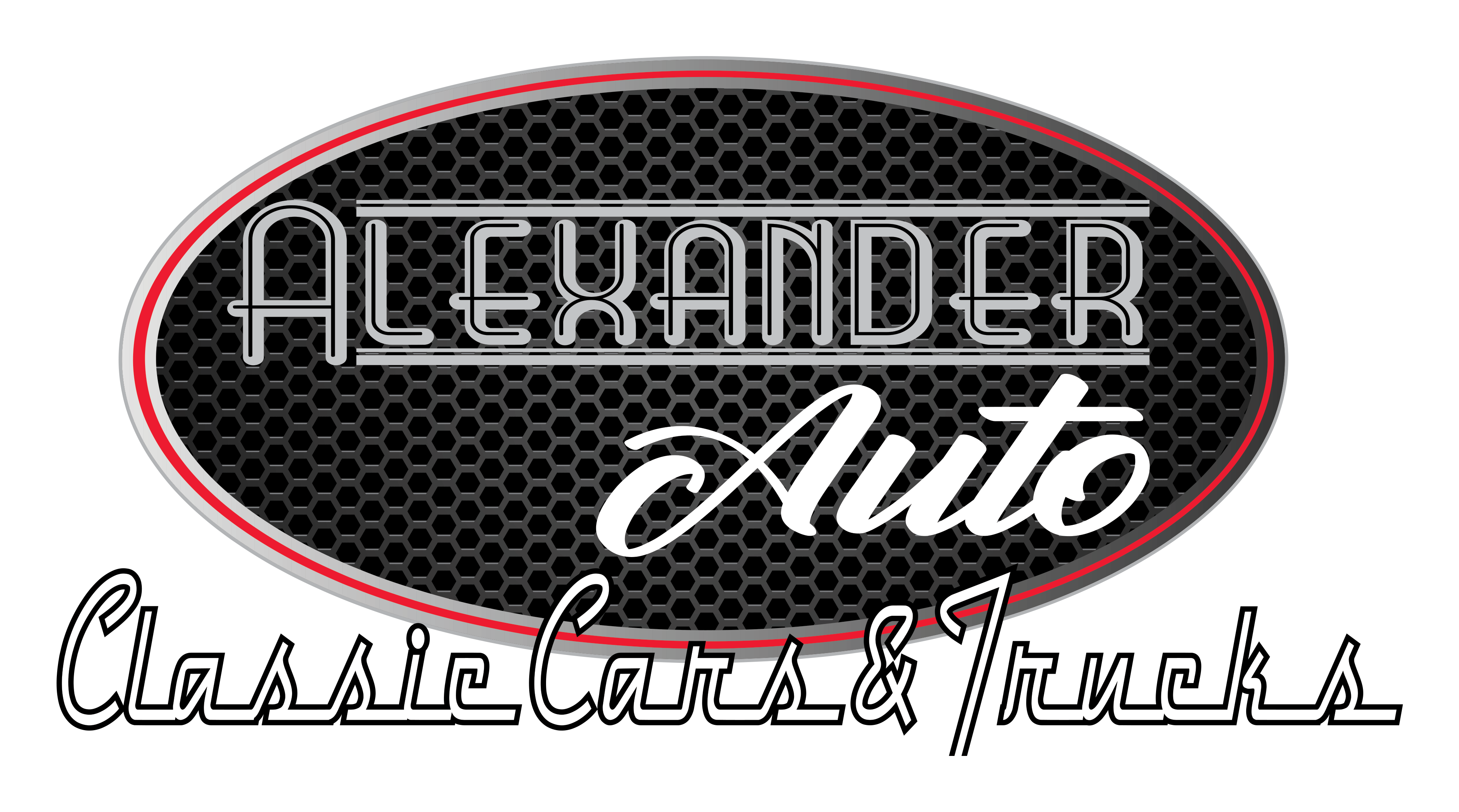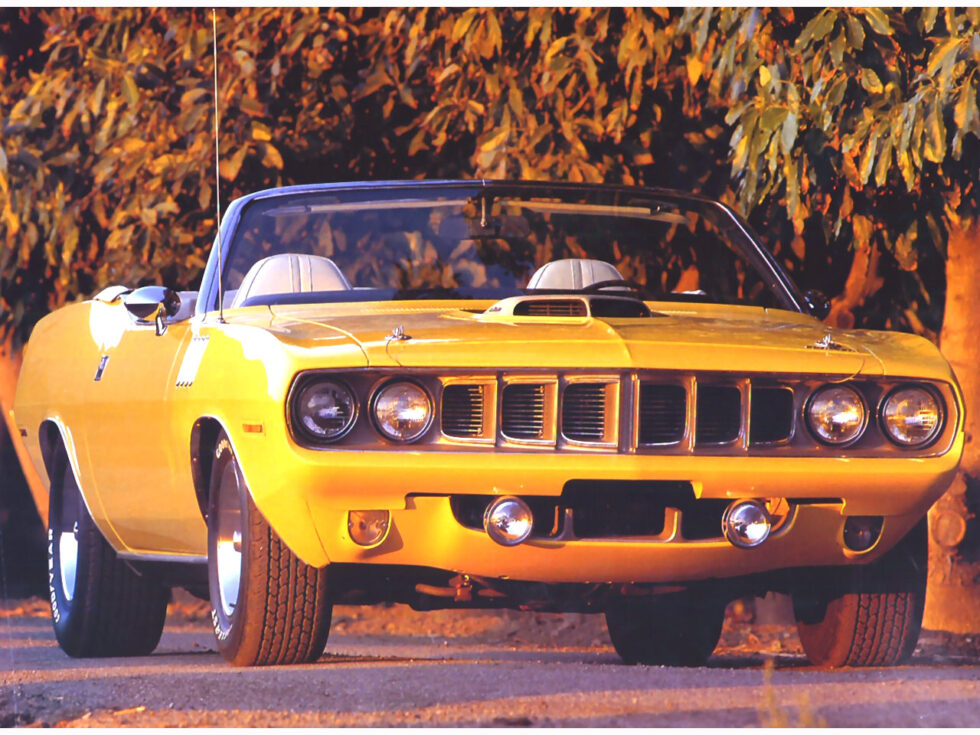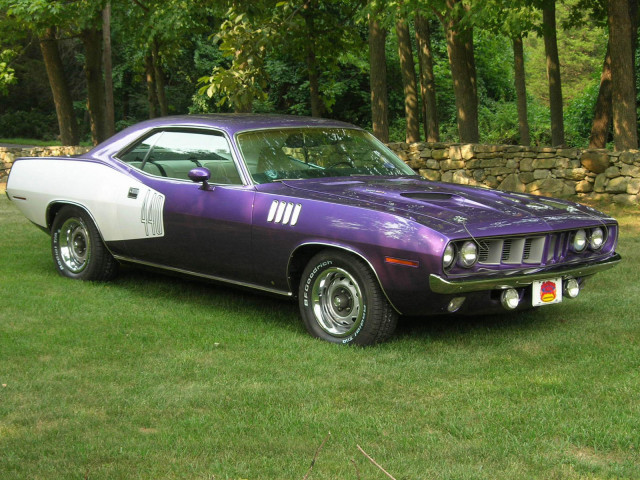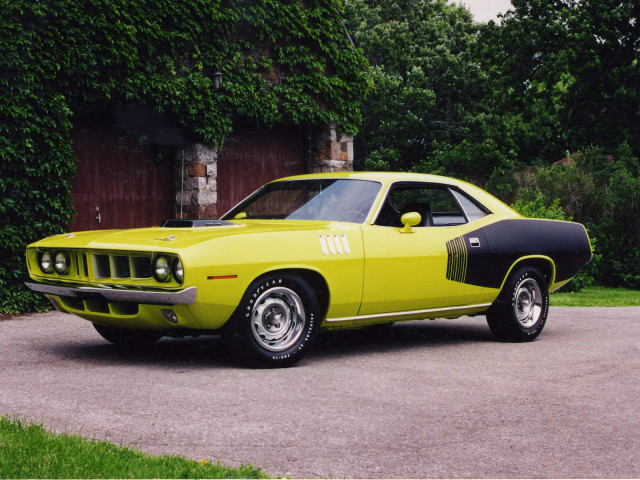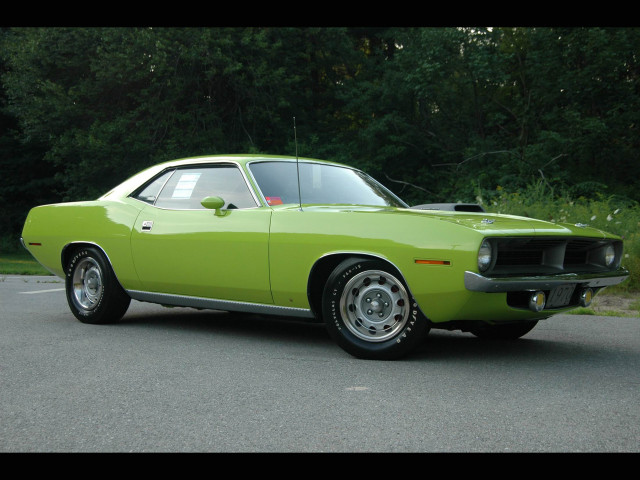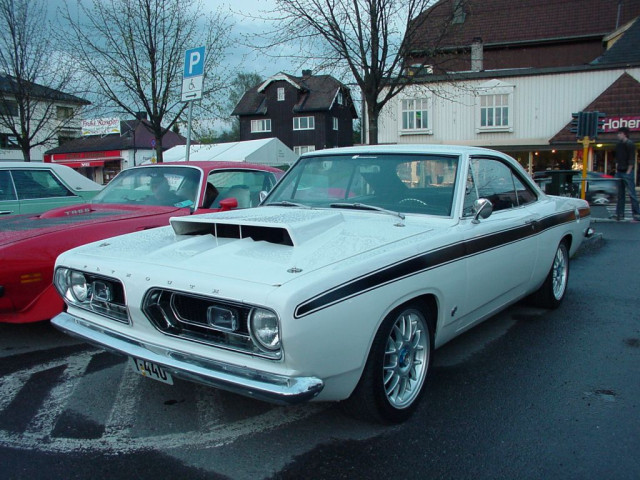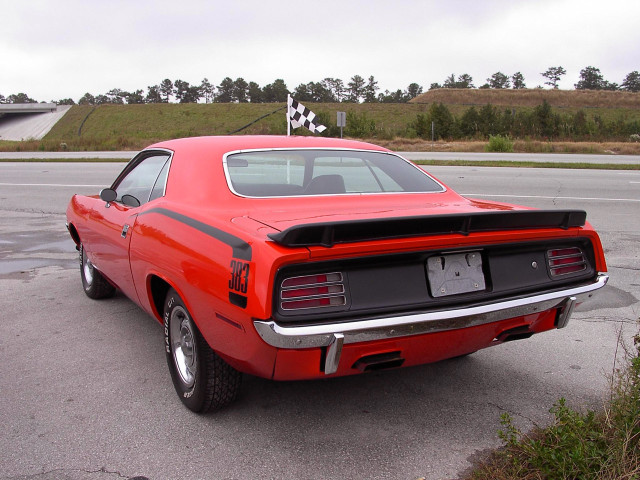Early Days: The First Barracuda (1964–1966)
- Introduced on April 1, 1964, the Plymouth Barracuda actually beat the Ford Mustang to market by two weeks, making it arguably the first “pony car.”
- Based on the compact Valiant platform and featured a massive wraparound rear window is it’s most distinctive feature.
- While performance was modest at first (slant-6 and small V8 options), it laid the groundwork for what was to come.
Second Generation: A Sportier Fish (1967–1969)
- In 1967, the Barracuda got its own unique body, available as a fastback, notchback, and convertible.
- Performance started to ramp up initially offered with 273 and 318 small-block V8s were then joined by the 340, 383, and eventually even the 426 HEMI.
- 1968 “Hemi ‘Cuda” drag cars (50 produced) were lightweight factory race monsters.
Third Generation: Muscle Car Royalty (1970–1974)
- The 1970 Barracuda broke away from the Valiant platform and rode on the new E-body, shared with the Dodge Challenger.
- Now it was bigger, wider, and much more aggressive in design, a true muscle car.
- Performance versions were badged as ‘Cuda (short for Barracuda) and could be ordered with: 383 Magnum, 440 Super Commando (with or without Six-Pack carbs) and the 426 HEMI
- The 1970–1971 ‘Cudas are the most prized today, especially convertibles and HEMI models.
End of the Line (1974)
- The last Plymouth Barracuda rolled off the line in April 1974.
- Insurance premiums, gas prices, and federal regulations killed the muscle car movement—and the ‘Cuda went with it.
- No 1975 Barracuda was ever produced, and the nameplate was retired.
Legacy & Modern Day
The Barracuda, especially the 1970–71 ‘Cuda, has become a muscle car legend.
Rare models, especially those with HEMIs, 4-speeds, or convertibles can fetch millions.
The Barracuda helped define the pony car class alongside the Mustang, Camaro, and Firebird.
